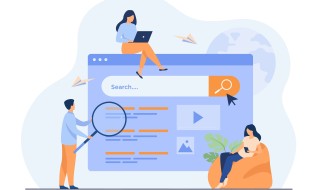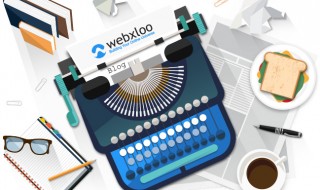![How to Use AI in 2025: A Practical Guide for Business Growth [New Data] How to Use AI in 2025: A Practical Guide for Business Growth [New Data]](https://webxloo.com/wp-content/uploads/2025/06/ai_system.jpg)
Introduction: From Future Concept to Business Essential
For years, Artificial Intelligence (AI) was the stuff of science fiction, a futuristic concept discussed in boardrooms and tech labs. As we navigate 2025, that future is now the present. AI has rapidly evolved from a niche technology into an indispensable business tool, fundamentally reshaping how companies market their products, sell their services, support their customers, and make strategic decisions. With the maturation of generative AI, the rise of predictive analytics, and the increasing accessibility of powerful AI tools, the question is no longer if businesses should use AI, but how they can use it effectively to gain a competitive edge.
This comprehensive guide, designed with E-E-A-T (Experience, Expertise, Authoritativeness, and Trustworthiness) principles at its core, will provide a practical roadmap for leveraging AI in 2025. We'll move beyond the hype to explore tangible applications and data-driven strategies that can deliver real-world results, from supercharging your marketing efforts to streamlining your daily operations.
The AI Landscape in 2025: Key Trends Businesses Must Know
To use AI effectively, it's crucial to understand the current landscape. New data reveals several dominant trends:
- Generative AI is Maturing: The technology has moved far beyond simple text generation. In 2025, advanced models are capable of creating sophisticated code, producing high-quality multimedia content, and even formulating complex business strategies and marketing plans. Over 70% of companies are now using generative AI in at least one business function, with marketing and content creation being the most common applications.
- Hyper-Personalization is the New Standard: AI's ability to analyze vast datasets allows businesses to deliver deeply personalized experiences at scale. This goes beyond using a customer's first name in an email; it involves tailoring product recommendations, content, and offers based on individual browsing history, purchase patterns, and predicted interests.
- Predictive Analytics Drives Proactive Decisions: Businesses are shifting from reactive data analysis to proactive, AI-driven forecasting. By identifying patterns in historical data, AI can predict future trends, customer churn, inventory needs, and sales performance with remarkable accuracy.
- Agentic AI and Workflow Automation: The rise of "AI agents" that can perform multi-step tasks is a game-changer. These agents can automate complex workflows, from processing invoices and managing customer service tickets to executing entire marketing campaigns, freeing up human teams for more strategic work.
- Focus on Ethical AI and Governance: With widespread adoption comes increased scrutiny. In 2025, there is a strong emphasis on responsible AI use, focusing on data privacy, transparency, and mitigating algorithmic bias. Building trust with customers through ethical AI practices is paramount.
How to Use AI in Marketing & Content Creation
This is one of the most accessible and impactful areas for AI adoption.
- AI-Assisted Content Strategy & Ideation: Instead of staring at a blank page, use AI as your strategic partner.
- How to Use It: Use AI tools to analyze top-ranking content for your target keywords. Ask the AI to identify common themes, subtopics, and "People Also Ask" questions. This helps you find content gaps and brainstorm comprehensive topic clusters that will satisfy user intent and search engine algorithms.
- Example Prompt: "Analyze the top 10 search results for the keyword 'benefits of data warehouse'. Identify the core subtopics, common questions answered, and any content gaps my article could fill to be more comprehensive."
- AI-Powered Content Creation & Optimization: The key is to use AI as an assistant, not a replacement, maintaining the crucial "human-in-the-loop" principle.
- How to Use It:
- Drafting & Outlining: Generate a detailed outline based on your strategy, then use AI to draft sections of the article, which your human experts will then edit, fact-check, and infuse with unique brand voice and experience.
- Summarizing & Repurposing: Instantly summarize long articles into social media posts, email newsletters, or video scripts.
- SEO Optimization: Use AI to analyze your draft for keyword density, readability, and semantic relevance. Some tools can suggest internal linking opportunities or ways to optimize for featured snippets.
- Multimedia Generation: Leverage AI to create custom images, graphics, and short videos for your content, reducing reliance on stock photography and providing unique visuals.
- Personalized Marketing Campaigns: Move beyond one-size-fits-all messaging.
- How to Use It: AI can analyze your customer data from various touchpoints to create dynamic audience segments. Use generative AI to craft personalized email subject lines and body copy that resonate with each segment's specific interests or past behaviors. AI can even optimize send times for individual recipients to maximize open rates.
How to Use AI in Sales & Lead Generation
AI is transforming sales teams from reactive order-takers to proactive, data-driven revenue generators.
- Predictive Lead Scoring: Focus your sales team's efforts where they'll have the most impact.
- How to Use It: Implement AI tools that connect to your CRM and website analytics. The AI analyzes lead behavior, such as pages visited, content downloaded, and email engagement, along with firmographic data to assign a score indicating their likelihood to convert. This allows your team to prioritize follow-ups with the hottest leads.
- Sales Process Automation: Free up your sales reps from time-consuming administrative tasks.
- How to Use It: Deploy AI agents to automate personalized follow-up email sequences after a meeting, transcribe and summarize sales calls, automatically update CRM records with call notes, and even handle meeting scheduling. Statistics show this can significantly increase the number of customer interactions an agent can handle.
- AI-Powered Sales Forecasting: Make more accurate revenue predictions.
- How to Use It: Use AI platforms to analyze historical sales data, team performance, market trends, and pipeline health. The AI can identify patterns and generate more accurate sales forecasts, helping with resource allocation and goal setting.
How to Use AI in Customer Service & Support
In 2025, AI is expected to handle a significant percentage of all customer interactions, making it a non-negotiable part of customer service.
- Intelligent, Empathetic Chatbots & Virtual Assistants: Provide instant, 24/7 support.
- How to Use It: Implement AI-powered chatbots that go beyond simple scripts. Modern AI can understand user intent, access knowledge bases to provide detailed answers, handle complex queries, and even detect user frustration through sentiment analysis. A key feature is their ability to seamlessly escalate a conversation, with full context, to a human agent when necessary.
- Automated Support Ticket Management: Improve response times and efficiency.
- How to Use It: AI can analyze the content of incoming support emails or tickets, automatically categorize the issue, assign it a priority level, and route it to the correct department or agent. This ensures that urgent issues are addressed quickly and by the right person.
Developing a Responsible AI Strategy: The E-E-A-T Imperative
Leveraging the power of AI comes with the responsibility to use it ethically and transparently. This is not just good practice—it's essential for building and maintaining customer trust.
- The Human-in-the-Loop Principle: Always remember that AI is a tool to augment, not replace, human expertise and judgment. For content creation, this means human editing and fact-checking. For customer service, it means easy escalation to a human agent. This demonstrates real Experience and Expertise.
- Data Privacy and Security: Be transparent about how you use customer data to train and operate your AI systems. Ensure your practices are compliant with all relevant data protection regulations.
- Transparency with Users: Clearly disclose when a user is interacting with an AI, such as a chatbot. This honesty builds Trust.
- Mitigating Bias: AI models are trained on data, which can contain inherent biases. Be aware of this potential and actively work to test and refine your AI applications to ensure fair and equitable outcomes.
Conclusion: The Future is Now
In 2025, artificial intelligence is no longer on the horizon; it is a fundamental component of modern business. From revolutionizing marketing, personalization, and automating sales processes to providing instant customer support and uncovering deep data insights, the applications are vast and transformative.
The key to success lies not in blindly adopting every new AI trend, but in a strategic and responsible implementation. By focusing on using AI to augment human capabilities, solve real business problems, and enhance the customer experience—all while adhering to ethical principles—you can unlock unprecedented growth and efficiency. Begin by identifying the tasks that are most time-consuming or the areas where data-driven decisions are most critical. Start small, experiment, measure the impact, and scale what works. The AI revolution is here, and the businesses that learn how to use it wisely will be the ones that lead the way forward.




 Phone Consultation
Phone Consultation
 Request a quote
Request a quote
 Text a Message
Text a Message